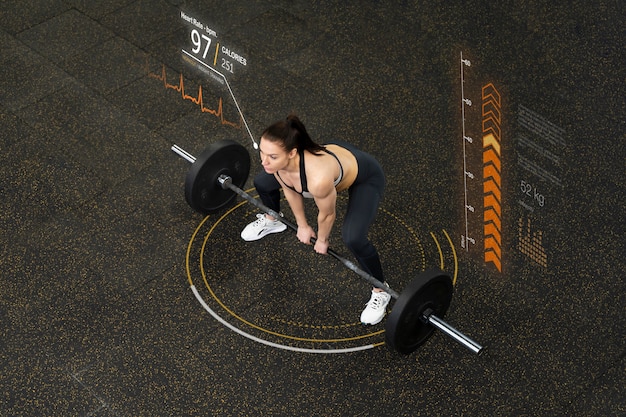Powerlifting is often associated with brute strength and muscle mass, but when approached strategically, it can be a powerful ally in supporting heart health—especially for those managing thyroid conditions. Contrary to popular belief, strength training doesn't compromise cardiovascular wellness; it enhances it. When combined with smart recovery, breathing techniques, and endurance-focused transitions, powerlifting can improve heart efficiency, metabolic function, and thyroid regulation.
This article outlines seven actionable, science-backed ways to use powerlifting to support heart and thyroid health, complete with progress checks to track your success over time.
Eccentric training—focusing on the lowering phase of a lift—has been shown to reduce systolic and diastolic blood pressure over time. For heart health, controlled eccentrics in squats, bench presses, and deadlifts improve vascular function and reduce arterial stiffness.
Action Step: Perform 3–4 sets of main lifts with a 3–4 second eccentric phase. For example, lower into a squat over 4 seconds, pause briefly, then explode up.
Progress Check: Monitor resting blood pressure every two weeks. A consistent drop or stabilization within normal range (under 120/80 mmHg) indicates cardiovascular improvement.

Controlled breathing enhances parasympathetic tone, improving heart rate variability—a key marker of heart resilience and autonomic balance. This is especially beneficial for individuals with hypothyroidism, who often experience reduced HRV.
Action Step: After each set, perform 30 seconds of diaphragmatic breathing: inhale for 4 seconds, hold for 2, exhale for 6. Repeat for 2–3 minutes between sets.
Progress Check: Use a wearable device to track HRV weekly. An upward trend over 4–6 weeks reflects improved cardiac adaptability.
To support endurance without overtaxing the thyroid, combine powerlifting with short, low-impact cardio intervals. This hybrid approach improves mitochondrial efficiency and oxygen uptake without triggering excessive cortisol release.
Action Step: After your main lifts, complete 3 rounds of: 2 minutes of cycling or rowing at moderate intensity, followed by 1 minute of bodyweight lunges or glute bridges.
Progress Check: Track your resting heart rate weekly. A gradual decrease suggests improved cardiovascular efficiency.

Thyroid health relies heavily on recovery. Overtraining can suppress T3 levels and increase inflammation, negatively impacting both heart and metabolism.
Action Step: Schedule 2–3 active recovery days per week featuring walking, yoga, or swimming for 30–45 minutes at 50–60% of max heart rate.
Progress Check: Monitor daily step count and energy levels. Aim for 7,000–10,000 steps/day and consistent energy (no crashes). Use a journal or app to log fatigue levels weekly.
As highlighted in recent research, combining daily heart rate and step count data offers deeper insight into cardiovascular health than either metric alone. This is especially useful for detecting early signs of thyroid-related cardiac strain.
Action Step: Use a fitness tracker to log resting heart rate and daily steps. Aim for a resting heart rate under 70 bpm and 8,000+ steps daily.
Progress Check: Plot both metrics weekly. A declining heart rate with stable or increasing steps indicates improving cardiovascular fitness.
Squats, deadlifts, and bench presses recruit large muscle groups, boosting post-exercise oxygen consumption (EPOC) and supporting healthy thyroid hormone conversion (T4 to T3).
Action Step: Structure workouts around 3–4 compound lifts per session, 3 times per week. Keep reps moderate (5–8) with 2–3 minutes rest between sets.
Progress Check: Monitor body composition monthly. Increased lean mass and stable or reduced body fat indicate improved metabolic health.
Proper hydration supports blood volume and electrolyte balance—critical for maintaining healthy heart rhythm and preventing arrhythmias, especially in those with thyroid imbalances.
Action Step: Consume 0.5–1 oz of water per pound of body weight daily. Include potassium- and magnesium-rich foods (spinach, avocado, bananas) or consider supplements if deficient.
Progress Check: Assess urine color daily (aim for pale yellow) and track muscle cramps or palpitations. Reduction in symptoms indicates improved hydration and electrolyte status.
Powerlifting, when tailored with heart and thyroid health in mind, becomes more than a strength sport—it becomes a holistic wellness strategy. By integrating controlled movements, breathwork, smart recovery, and data-driven progress checks, you can build a resilient cardiovascular system while supporting metabolic balance.
Start with one or two of these strategies, track your metrics consistently, and gradually layer in more. Over time, you'll not only lift heavier—you'll live healthier.

Fitness

Fitness

Fitness

Fitness

Fitness

Fitness

Fitness

Fitness

Fitness

Fitness

Fitness

Fitness

Health

Fitness

Health

Health